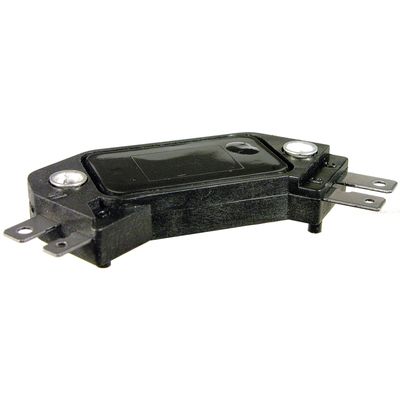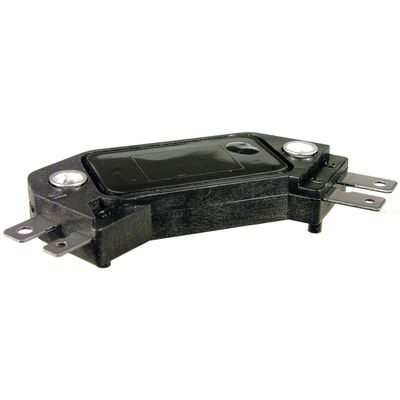Answer
Aug 15, 2024 - 07:33 AM
Testing the ACDelco D1906 Ignition Control Module (ICM) requires a few tools and steps to ensure it's functioning correctly. Below is a detailed guide on how to perform the test:
Tools You Will Need:- Multimeter (for measuring resistance and voltage)
- Test light (optional, for checking signal)
- OBD-II scanner (for checking diagnostic codes, if available)
- Screwdriver or socket set (for removing the ICM)
- Heat gun (optional, for heat testing)
1. Safety Precautions:
- Turn Off the Engine: Ensure the vehicle is turned off and the key is removed from the ignition.
- Disconnect the Battery: To prevent electrical shock or damage, disconnect the negative terminal of the battery.
2. Locate and Remove the ICM:
- The ICM is usually located near the distributor or ignition coils. Refer to your vehicle’s manual to find the exact location.
- Carefully disconnect the ICM from the wiring harness and remove it from its mounting point.
3. Visual Inspection:
- Check for Damage: Inspect the ICM for physical damage such as cracks, corrosion, or burn marks. Also, check the connectors for any signs of wear or corrosion.
4. Resistance Test:
- Set the Multimeter to Ohms: Use the resistance (ohms) setting on your multimeter.
- Measure Resistance Between Terminals: Test the resistance between the ICM’s terminals as specified in your vehicle’s service manual. Common terminals to test might include the primary and secondary circuits. If the resistance is outside the specified range (either too high or too low), the ICM may be faulty.
5. Power Supply Test:
- Reconnect the Battery: Reconnect the negative battery terminal.
- Set the Multimeter to Volts: Switch the multimeter to the DC voltage setting.
- Check Voltage at Power Terminal: With the ignition key in the "ON" position (engine off), measure the voltage at the ICM’s power input terminal. You should see around 12 volts. If there’s no voltage or it’s significantly lower, there could be an issue with the wiring or power supply to the ICM.
6. Signal Test:
- Set the Multimeter to AC Volts: Switch the multimeter to measure AC voltage.
- Crank the Engine: Have an assistant crank the engine while you check the output signal from the ICM to the ignition coil. You should see a pulsing signal. If no signal is present, the ICM may be faulty.
Alternatively, you can use a test light to check for the presence of a pulsing signal by connecting the test light to the output terminal and observing the light as the engine is cranked.
7. Check for Spark:
- Remove a Spark Plug: Remove one of the spark plugs and reconnect it to its wire.
- Ground the Spark Plug: Hold the spark plug against a grounded part of the engine (use insulated pliers).
- Crank the Engine: Have an assistant crank the engine while you observe the spark plug. If no spark is present, the ICM or ignition coil could be faulty.
8. Heat Test (Optional):
- Simulate Operating Conditions: Some ICMs may fail when they get hot. You can use a heat gun to warm the ICM slightly.
- Retest After Heating: Repeat the resistance and signal tests while the ICM is warm. If the module fails the test when hot but passes when cool, it is likely defective and needs replacement.
9. Diagnostic Code Check (Optional):
- Use an OBD-II Scanner: If your vehicle has a Check Engine Light on, connect an OBD-II scanner to retrieve any stored trouble codes. Misfire codes or codes related to ignition timing can indicate issues with the ICM.
If the ACDelco D1906 ICM fails any of the above tests—such as incorrect resistance readings, lack of proper voltage, no spark, or no pulsing signal—it is likely faulty and should be replaced. Always cross-reference your findings with the specifications in your vehicle's service manual to ensure accuracy.





Add New Comment